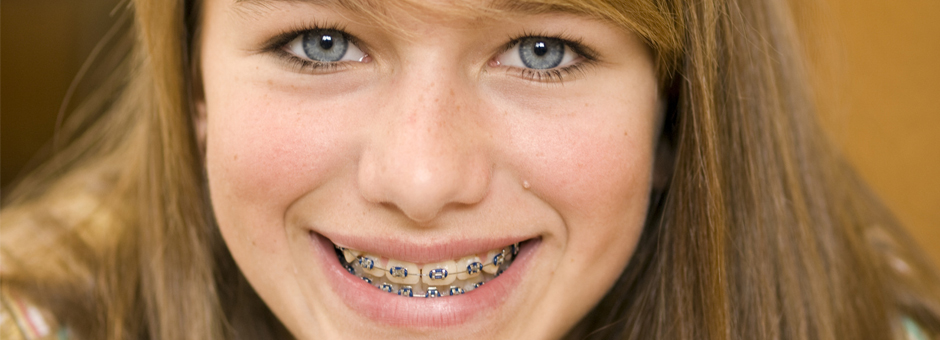Many children and teens are ambivalent about getting braces. On the one hand, they like the idea of perfect teeth, but on the other hand they are nervous about whether the braces will cause pain and discomfort. The good news is that the placement of orthodontic braces is not at all painful, and the end result will be a beautiful straight smile.
Although patients of any age can benefit from orthodontic braces, they tend to work much quicker on pre-teens and teenagers since they are still experiencing jaw growth. The American Association of Orthodontists (AAO) recommends that children should first see an orthodontist around the age of seven years-old. An orthodontic examination may be beneficial before age seven if facial or oral irregularities are noted.
What Causes misalignment of teeth?
Poorly aligned teeth often cause problems speaking, biting and chewing. Most irregularities are genetic or occur as a result of developmental issues. Conversely, some irregularities are acquired or greatly exacerbated by certain habits and behaviors such as:
- Mouth breathing
- Thumb or finger sucking
- Prolonged pacifier use
- Poor oral hygiene
- Poor nutrition
What’s involved when a child or teen gets orthodontic appliances?
The orthodontist initially conducts a visual examination of the child’s teeth. This will be accompanied by panoramic x-rays, study models (molds) and computer generated images of the head and neck. These preliminary assessments are sometimes known as the “planning phase” because they aid the orthodontist in making a diagnosis and planning the most effective treatment.
In some cases, the orthodontist will recommend “fixed” orthodontic braces for a child or teen. Fixed braces cannot be lost, forgotten or removed at will, which means that treatment is completed more quickly. Removable appliances such as clear aligners (example: Invisalign) may also be utilized, which are less intrusive, and are generally used to treat various types of defects.
Here is a brief overview of some of the main types of orthodontic appliances used for children and teens:
Clear aligners – Clear aligners such as Invisalign or 3M Clarity offer a clear option to aligning the teeth. Sometimes, there are teeth that require tooth colored attachments so that the teeth move more effectively and efficiently. Aligners are given about 6 sets of upper and lower at a time, and instructions are provided on how often to switch aligners to continue with teeth alignment. More information is provided in the clear aligner section.
Fixed braces – Braces comprised of brackets which are affixed to each individual tooth, and an arch wire which connect the brackets. The brackets are usually made of metal, ceramic, or a clear synthetic material which is less noticeable to the naked eye. After braces have been applied, the child will have regular appointments to have the braces adjusted by the orthodontist. Orthodontic elastic bands are often added to the braces to aid in the movement of specific teeth.
Expander – An expander is a custom-made appliance that is fitted in the palate to widen the upper arch and create more space for the upper teeth. Once the expander is delivered, the doctor will explain to the parent and child how to activate the expander and how to clean the expander.
Headgear – This type of appliance is most useful to treat developmental irregularities. A headgear is a custom-made appliance attached to wire that is worn to aid in tooth movement. A headgear is intended to be worn for 12 hours each day (only worn at home) to achieve good results.
Retainers – Retainers are typically utilized in the third phase (retention phase). When the original malocclusion has been treated with braces, it is essential that the teeth do not regress back to the original misalignment. Wearing a retainer ensures the teeth maintain their proper alignment, and gives the jawbone around the teeth a chance to stabilize.
If you have questions about braces for children and teens, please contact our office.











